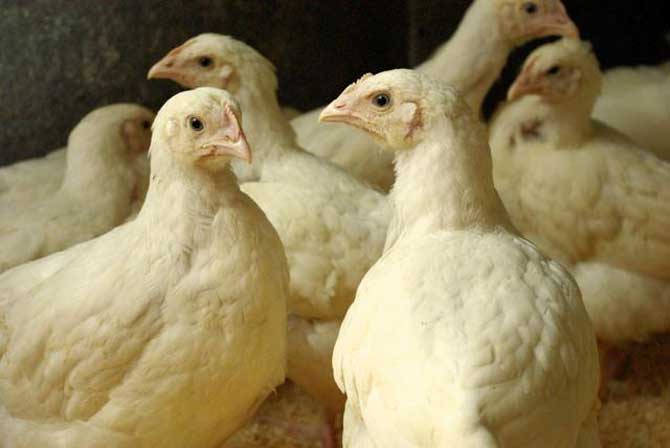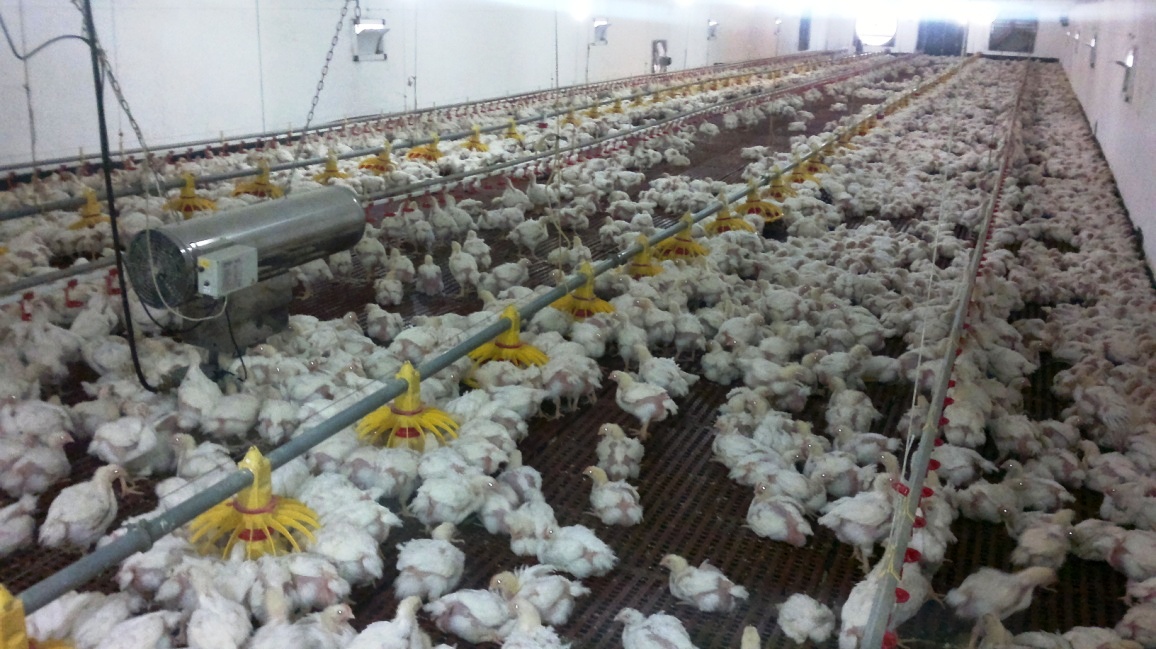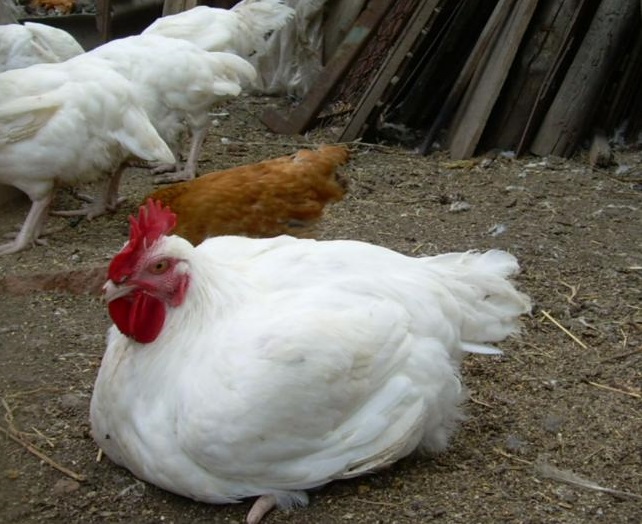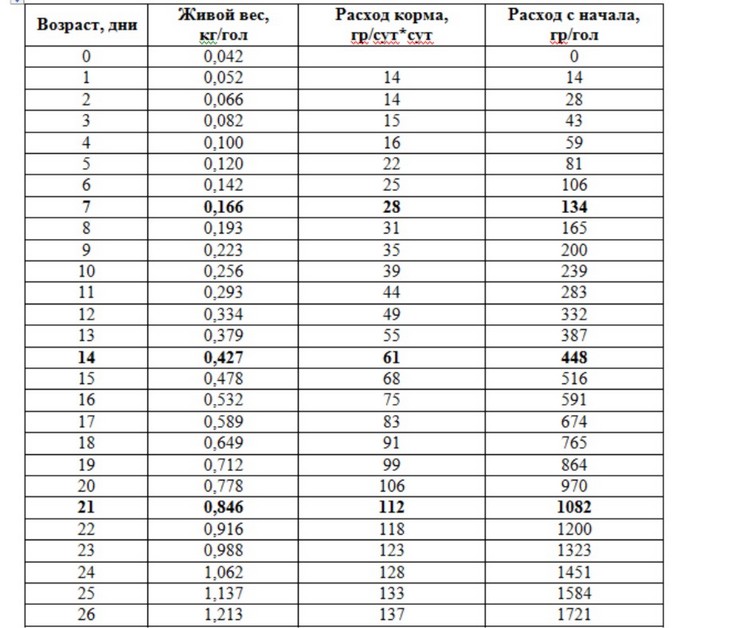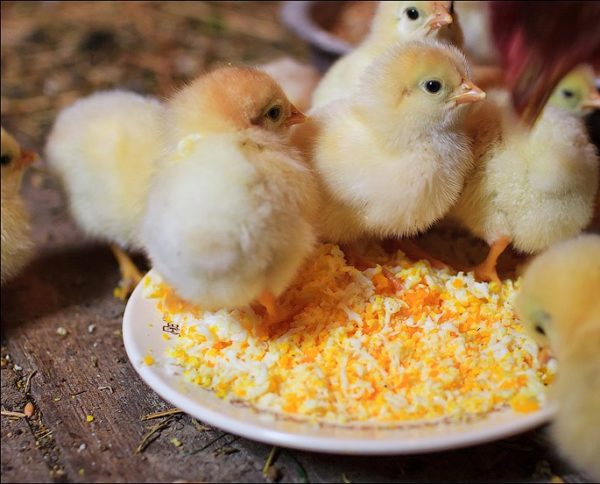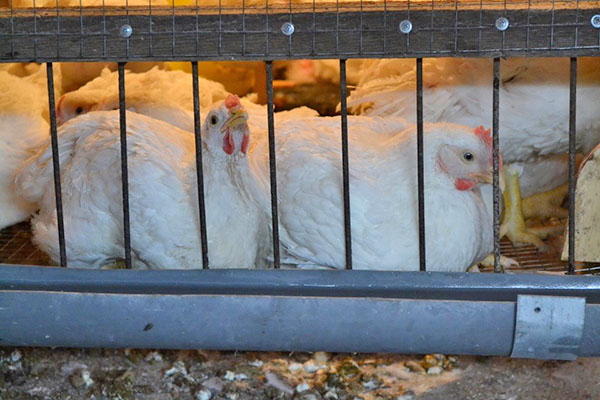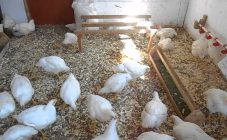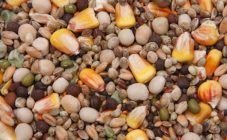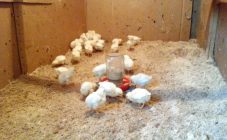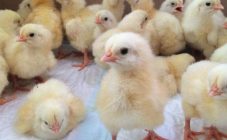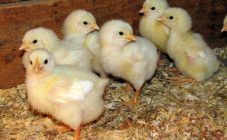Content:
Growing broiler chickens has been gaining popularity in recent years. But in order to get a positive result, the birds should be provided with proper care and feeding. In order to avoid mistakes, it is strongly recommended that you first get as much information about the selected breed of chickens and find out the basic rules for caring for it.
Rules for keeping broiler chickens
In practice, there are two main ways of keeping broiler chicks: extensive and intensive.
The essence of the intensive method is as follows. Broiler chickens are purchased in batches in the spring and are usually raised until mid-summer (until they gain the desired weight and acquire commercial quality). Chickens are slaughtered, and broiler breeding and keeping is completely stopped until the new season begins.
With an intensive method, the main condition for breeding poultry is continuity. New lots of chickens are purchased quarterly throughout the year.
Broilers can be kept on the floor or in a cage.
Raising birds on the floor
If domestic chickens are raised on the floor, special attention should be paid to the bedding. It should be dry and loose (to have a good absorbency). The best option is dried sawdust without the inclusion of large chips.
The requirements for the premises in case the farmer has chosen floor broiler breeding will be as follows:
- sawdust on the floor should be poured onto a layer of quicklime powder (1 kg / sq. m); the thickness of the litter should be no more than 10 cm;
- for single-color chickens, 24-hour lighting is required inside the chicken coop;
- to provide chickens with an optimal microclimate, a good ventilation system is required;
- the temperature in the room with poultry should be in the range from 26 to 33 degrees in the first days of chickens' life, after a month - about 20 degrees;
- it is necessary to carefully monitor the air humidity indicator (from 65 to 70%).
Raising birds in cages
When keeping birds in cages, slightly different rules and regulations apply:
- under no circumstances are more than 20 chickens allowed in one cage;
- placement of cells in several rows is allowed (thus, space is significantly saved);
- on each of the tiers, the temperature should be kept at +35 degrees;
- cages should be regularly cleaned and disinfected;
- the room must be equipped with ventilation.
Broilers Ross 308: breed description
There are a number of broiler breeds that are best suited for commercial rearing. These include Ross 308 chickens. One important characteristic is that, unlike most other broilers, Ross 308 chickens can be successfully reared not only in poultry conditions, but also in ordinary households.
Broilers Ross 308 is a hybrid, the main potential of which is aimed at increasing such an indicator as poultry growth, as well as increasing the meat component.
The body of Ross 308 broilers is described as quite powerful and has a protruding chest. Its shape most closely resembles an oval. The legs of the Ross breed are wide apart and yellow in color. The back is round and sloping. Cross 308 broiler description states that the color of the bird must be perfectly white. The presence of blotches is a marriage of the breed.
The poultry skin is very flexible and thin. The earrings and comb have a deep red color.
Despite the fact that the breed has roots among fighting chicken breeds, aggression in the selection process was successfully eliminated. As a result, only the outline of the body reminds of the roots.
For chickens Ross 308 is characterized by a high rate of adaptability to almost any conditions of detention. They are allowed to grow, including in cages.
Fast weight gain is one of the distinctive features of the described poultry breed. If everything is organized correctly and a balanced feeding is provided to the birds, broilers can be raised at home. In this case, it will be possible not only to provide the family with meat in full, but also to sell the surplus.
Newborn chickens do not have any particular differences from other breeds, for example, from the Cobb. Their birth weight is 45 g, the chicks themselves are covered with fluff. Full plumage begins to appear around the thirtieth day of life.
Despite the fact that the breed was originally bred as a meat breed, no one particularly expected a good egg production rate from chickens. However, if birds are fed regularly and in a balanced manner, they will produce as many eggs as meat breeds.
Weight by day
Growing features
For full weight gain, Ross 308 chickens need to provide proper nutrition. Its features largely depend on the age of the birds.
Chicks should be fed both day and night, and with extreme care. Until one week of age, milled millet, oatmeal or any other finely ground cereals are best suited.
It is better not to introduce moist foods too early. They can cause a variety of diseases. From about the third day, it is allowed to start feeding the chicks with greens (always finely chopped).
When chicks are two weeks old, you can start feeding carrots and potatoes. We should not forget about vitamin complexes. Any specialized compound feed that can be purchased in a specialized store will be a good solution.
Broilers can be kept both in cages and chicken coops. There is a certain difference between these methods, but both allow, if you follow the rules, to get a positive result.
Growing in a poultry house
The poultry house should never be cramped, it should be heated and ventilated. There is no need for special perches, because the layers are large enough. Litter will be required, for the prevention of diseases it will need to be additionally supplied with a small layer of lime. It is important to monitor the humidity indicator - its level should not rise above 60%.
Growing in cages
When all the financial costs are weighed, it is more profitable to raise chickens in cages. But lack of mobility negatively affects the quality of the meat. Cleaning the cages will take a lot of time and effort. As a result, this method turns out to be not the most popular and is rarely practiced. If a farmer is willing to spend a lot of time caring for poultry, he can raise the birds in a cage.
When to worm broilers Ross 380
Broilers should be wormed at the first symptoms of helminthiasis. This disease for chickens in general, and this breed, in particular, poses a great danger.
Practice shows that it is easier to prevent helminthiasis than to cure it. The risk of infection in birds is especially high in spring and autumn. For prevention, drugs such as Piperazine, Phenothiazine, Flubivent, etc. will be useful.
